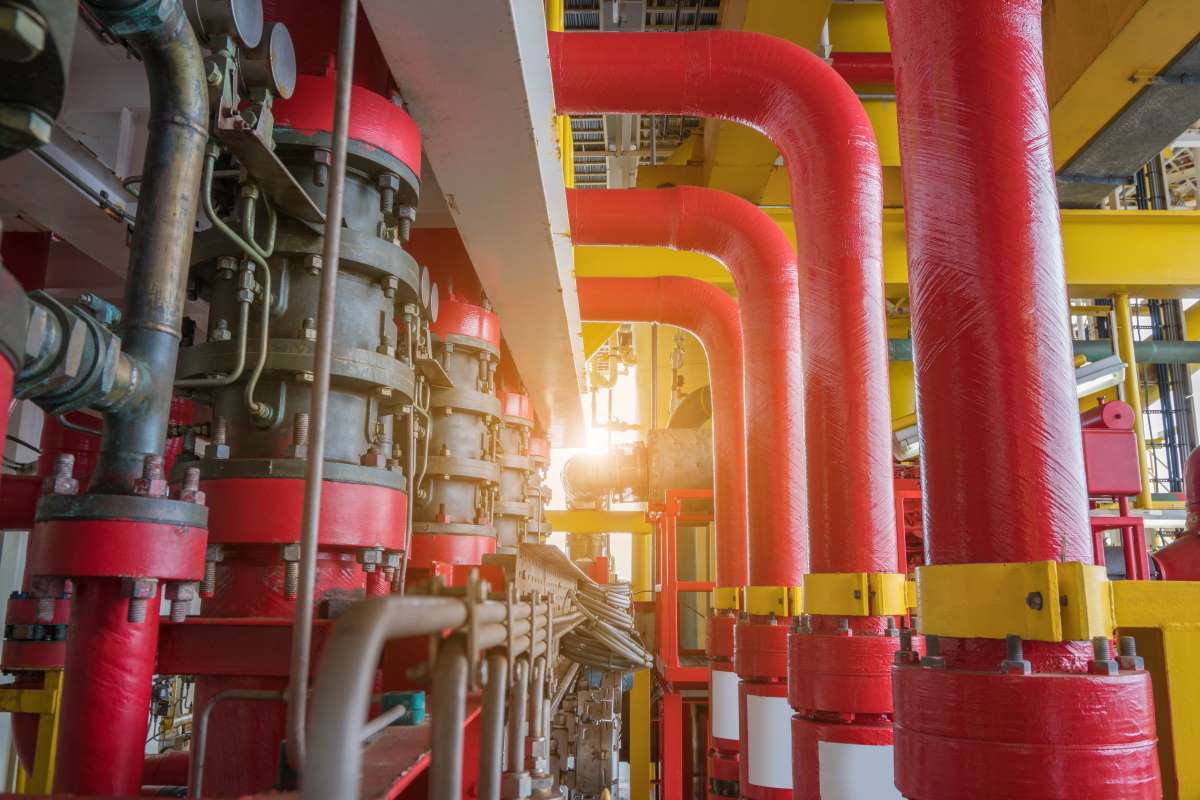
Deluge fire protection systems are a special type of fire sprinkler system, which is connected directly to the water supply with a deluge valve. In more common types of sprinkler systems, the sprinkler heads are closed until activated whereas the sprinkler heads or nozzles in a deluge system remain open at all times. When the deluge valve is activated, it releases the water into the pipes and through all the sprinkler heads or nozzles all at once, inundating the protected area.
Foam water deluge systems function in basically the same way but are connected to a source of concentrated fire suppressant foam in addition to a water supply, which allows mixing as it is released through the sprinkler heads or nozzles.
A deluge system is an "empty-pipe" system. Unlike a "wet-pipe" sprinkler system in which the piping system is filled with water at all times, or a "dry-pipe" system, in which the pipes are filled with pressurized air or nitrogen, the piping in a deluge system contains only air at the surrounding atmospheric pressure. The water (and foam, in foam water systems) are held back by a deluge valve at the water supply connection.
Deluge systems are typically used in high hazard areas such as power plants, chemical plants, and other industrial or manufacturing facilities where there are large amounts of combustibles that would allow a fire to become explosive and spread quickly. Because of their ability to completely flood an area with water within seconds of activation, deluge systems are very effective in such scenarios.
What You Should Know If You Have a Deluge System
Like all fire protection systems, deluge sprinkler systems must be inspected and tested on a regular basis to remain in compliance with local and state fire codes. The National Fire Protection Association (NFPA) 25 Standard for the Inspection, Testing, and Maintenance of Water-Based Fire Protection Systems covers these requirements in detail. If your building has a deluge system, you will find the table below a useful summary of the inspection and testing requirements for deluge systems.
| Frequency | System Components |
| Inspections | |
|
Daily |
|
|
Weekly |
|
|
Monthly |
|
|
Quarterly |
|
|
Semiannually |
|
|
Annually |
|
|
Every five years |
|
| Testing | |
|
Quarterly |
|
|
Annually |
|
|
Every five years |
|
|
Every ten years |
|
While these requirements may seem daunting, they don't have to be. Regardless of the type of sprinkler system your building has, Koorsen can help you determine what inspections and tests are required and can help you stay on top of them to keep your fire sprinkler system well maintained and compliant at all times. Contact us today to begin enjoying the peace of mind that if a fire does break out in your building, your sprinklers will operate as expected to put it out quickly.


